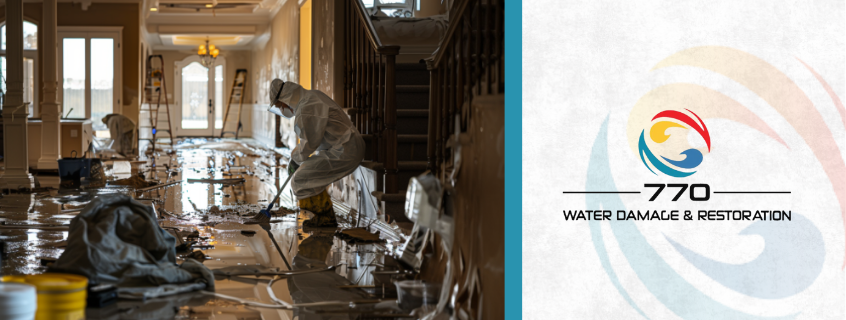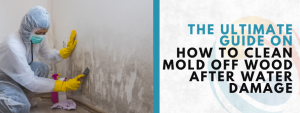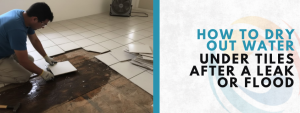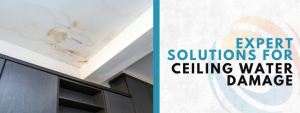
Picture this: You’re walking into your new home or commercial building, feeling excited about the possibilities. The walls are painted, the floors are polished, and the lights turn on with a perfect flick. Everything looks flawless—until something small catches your eye. A strange crack along the ceiling. A musty smell. Peeling paint. These aren’t just cosmetic quirks—they might be building inspection signs that point to something much more serious.
When you’re looking to buy, sell, or maintain a property, spotting these early signs can save you from huge headaches and unexpected costs. That’s why knowing what to look for is so important. In this article, we’ll walk you through the most important building inspection signs that should never be ignored, even if they seem minor at first glance.
Let’s dive into the top seven signs that might mean your building has hidden dangers waiting to be revealed.
1. Cracks in Walls, Floors, or Ceilings
Not all cracks are equal. Some are normal as a building settles over time. But others? They can spell disaster.
Cracks that widen quickly, especially diagonal or stair-step cracks, could mean structural instability. If these cracks run through bricks, concrete, or tile, they may be due to foundation movement or shifting soil beneath the building.
Some cracks to watch out for:
- Horizontal cracks along basement walls
- Diagonal cracks from window or door corners
- Gaps wider than 1/4 inch
- Cracks that grow in size over a short period
These building inspection signs are especially concerning if they are combined with sloping floors or doors that don’t close properly. A professional inspection can determine whether it’s a superficial issue or a more serious structural concern.
2. Uneven or Sloping Floors
You might think that creaky or slanted floors are just quirks of an older building, but they’re not always harmless. Floors that slope more than one inch over 20 feet might be trying to tell you something.
Sloping or bouncy floors could mean:
- Foundation settlement
- Rotten floor joists
- Termite damage
- Moisture issues in crawl spaces or basements
Walk slowly through each room. Do you feel dips? Do you notice furniture leaning slightly? These are building inspection signs that indicate you need a closer look underneath the surface.
Here’s a helpful way to measure slope:
Place a marble on the floor and see if it rolls on its own. That simple test might uncover more than you expect.
3. Dampness, Mold, or Musty Odors
Moisture is like a silent invader. You might not see water damage right away, but your nose might pick up on trouble before your eyes do. A musty or mildew-like smell in closets, basements, or walls often means excess moisture, and where there’s moisture, mold is usually not far behind.
Watch out for:
- Water stains on ceilings or walls
- Bubbling paint or wallpaper
- Discoloration in carpets or flooring
- Visible mold growth
These building inspection signs suggest poor ventilation, leaks, or previous flooding. Mold isn’t just unsightly—it can cause breathing issues and long-term health problems, especially in kids and the elderly.
If you discover musty smells or soft walls, it’s crucial to get an expert opinion. Often, this is when property owners discover water issues they never knew existed. When left untreated, moisture can weaken the structure and lead to extremely costly repairs. This is often how people find themselves in need of emergency cleanup after water damage.
4. Roof Issues or Sagging Eaves
The roof is the first line of defense against rain, wind, and snow. When it’s not doing its job, the rest of the building suffers.
A damaged or sagging roof may show signs like:
- Missing or curling shingles
- Water stains in the attic
- Daylight is visible through the roof boards
- Sagging eaves or gutters pulling away from the house
These building inspection signs often go unnoticed unless you’re specifically looking for them. But they can signal rot in the roofing frame or water leaks that have been left unaddressed.
Keep an eye on the roofline from outside. Does it bow inward? Is it wavy instead of straight? These are visual indicators that the support structure underneath could be compromised.
Don’t forget to check the attic. If insulation is damp or smells odd, it’s a sign that water is getting in somehow—maybe from broken flashing or deteriorated shingles.
5. Electrical Problems or Flickering Lights
Electricity is one of those things we tend to take for granted—until it starts acting up. If lights flicker, breakers trip often, or outlets feel warm, these are building inspection signs you shouldn’t ignore.
Common red flags include:
- Outlets that spark when plugged in
- Frequently blown fuses or tripped circuits
- Outdated fuse boxes
- Scorch marks or burning smells near switches
Older homes, in particular, may have outdated wiring systems that aren’t safe by today’s standards. Knob-and-tube wiring, for example, isn’t designed for modern energy demands and can be a serious fire risk.
A building that’s been remodeled or extended without professional help might also have overloaded circuits, loose wiring, or improper grounding. These issues are hidden behind walls and need a professional inspection to uncover.
If you’re not sure how long it’s been since the last inspection, it’s worth having a licensed electrician check it out. It’s not just about convenience—it’s about safety.
6. Poor Drainage or Grading Around the Building
Your building should never look like it’s sitting in a puddle after a rainstorm. If water collects around the foundation or flows toward the structure instead of away, you might have drainage issues that lead to bigger problems down the road.
Poor drainage can lead to:
- Foundation cracking
- Soil erosion
- Water entering crawl spaces or basements
- Mold and mildew problems
Here are some building inspection signs to pay attention to outdoors:
- Downspouts discharging near the foundation
- Pooling water in the yard after rain
- The basement smells like soil or rot
- Mud splashes or water lines on the siding
Proper grading should slope away from the building at a minimum of 6 inches over the first 10 feet. If it doesn’t, the water is soaking the soil near your foundation and may cause long-term damage.
In many cases, property owners only discover their drainage problem after it’s too late. By then, they’re already dealing with foundation water infiltration and costly remediation.
7. Pest Infestations or Termite Damage
Critters aren’t just unwanted guests—they’re invaders that can cause structural destruction without making a sound.
Signs of pest infestation include:
- Piles of sawdust (from carpenter ants or termites)
- Hollow-sounding wood
- Mud tubes on foundation walls
- Droppings or nesting material in corners
- Gnawed wiring or insulation
Termites in particular are known as “silent destroyers” because they can eat away at wooden framing inside walls for years before anyone notices.
These are some of the most hidden building inspection signs, especially because termites and rodents tend to operate behind drywall or beneath floors. However, pest inspectors are trained to look for entry points, moisture sources, and other red flags that often go unnoticed.
It’s wise to schedule annual pest inspections, especially in humid or wooded areas. Even newer buildings aren’t immune, especially if they have untreated wood near the ground.
Helpful Reference Table
| Sign of Trouble | What It Might Mean | Who to Call First |
| Wall Cracks | Foundation settlement | Structural engineer |
| Musty Odor | Water damage or mold | Mold remediation specialist |
| Sagging Roof | Rotting trusses or water intrusion | Roofing contractor |
| Flickering Lights | Electrical overload or loose wiring | Licensed electrician |
| Water Pooling Outside | Bad drainage or grading issues | Landscaping/grading expert |
| Hollow Wood or Sawdust | Termite infestation | Pest control professional |
| Bouncy Floorboards | Weak joists or wood rot | General contractor or inspector |
What to Do If You Spot Trouble
If any of the building inspection signs above seem familiar to you, don’t panic. But don’t ignore them either.
Here’s a step-by-step checklist:
- Document everything – Take photos and write notes.
- Call an expert – Get a qualified inspector to assess the issue.
- Request quotes – Don’t rely on just one contractor; get a few estimates.
- Check your insurance – You may be covered for certain issues.
- Take action quickly – The longer you wait, the worse it could get.
And remember: Prevention always costs less than repair. Many people overlook these signs until it’s too late. That’s why it’s important to partner with professionals who specialize in detecting hidden damage before it becomes a nightmare. If you’re unsure where to start, you can explore this trusted resource for building health checks.
Final Thoughts
Spotting building inspection signs early can protect your health, your finances, and your peace of mind. Whether you’re buying your first home, managing a rental, or keeping up with your commercial property, knowing what to look for helps you stay ahead of serious damage.
So the next time you walk through a property, look closer. Listen. Smell. Feel the floor. Observe the ceiling. A squeak, a smell, or a slight crack might be trying to warn you.
The sooner you recognize the signs, the better your chances of solving the problem before it grows. And with the right support, you won’t just spot the issues—you’ll solve them confidently.If you need help figuring out what these signs mean or how serious they are, don’t wait until the damage gets worse. There are professionals ready to help assess the condition of your property and offer real solutions. You can learn more and take the first step by visiting this easy-to-use site for reliable inspections.
Frequently Asked Questions About Building Inspection Signs
How do I know if a crack in my wall is serious?
If the crack is diagonal, wide, or growing, it could be a sign of foundation trouble. Have a licensed inspector assess it to rule out structural issues.
What should I do if my house smells musty all the time?
A persistent musty odor usually indicates hidden moisture or mold. It’s best to schedule a mold inspection right away.
Why are my floors sloping or squeaking so much?
Sloping or noisy floors may point to foundation settling, rot, or weakened joists. You’ll need a professional to check beneath the floor for hidden damage.
Can flickering lights mean something is wrong with my home?
Yes, flickering lights often signal overloaded circuits or faulty wiring. Call an electrician promptly to avoid potential fire hazards.
Should I worry if water pools around my house after rain?
Yes, poor drainage can lead to foundation damage and water intrusion. Proper grading and drainage fixes are critical to protect your structure.






